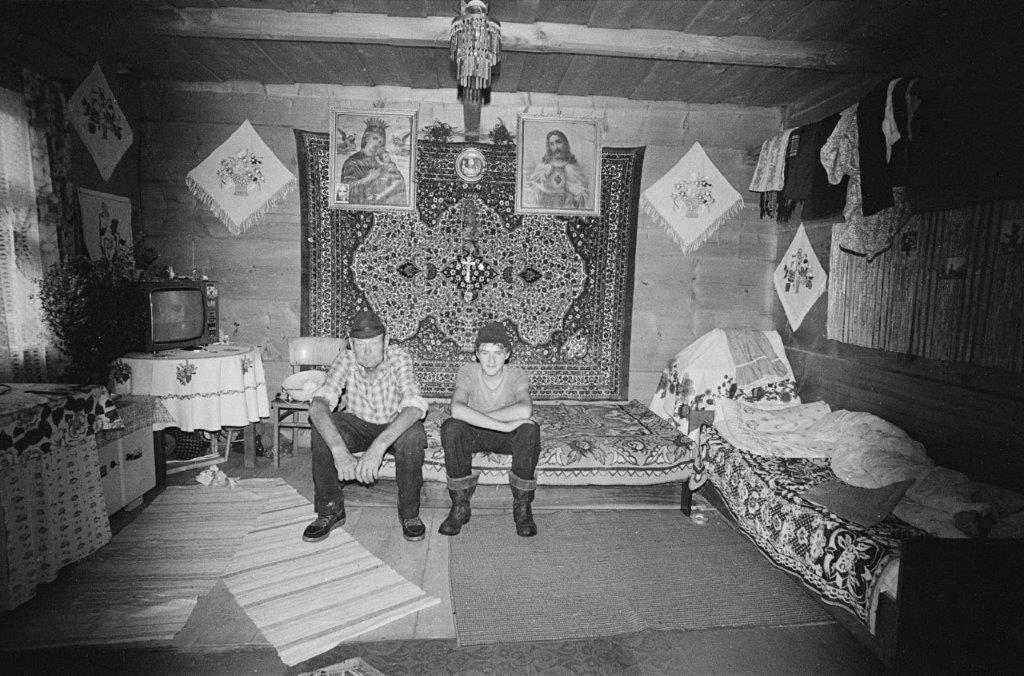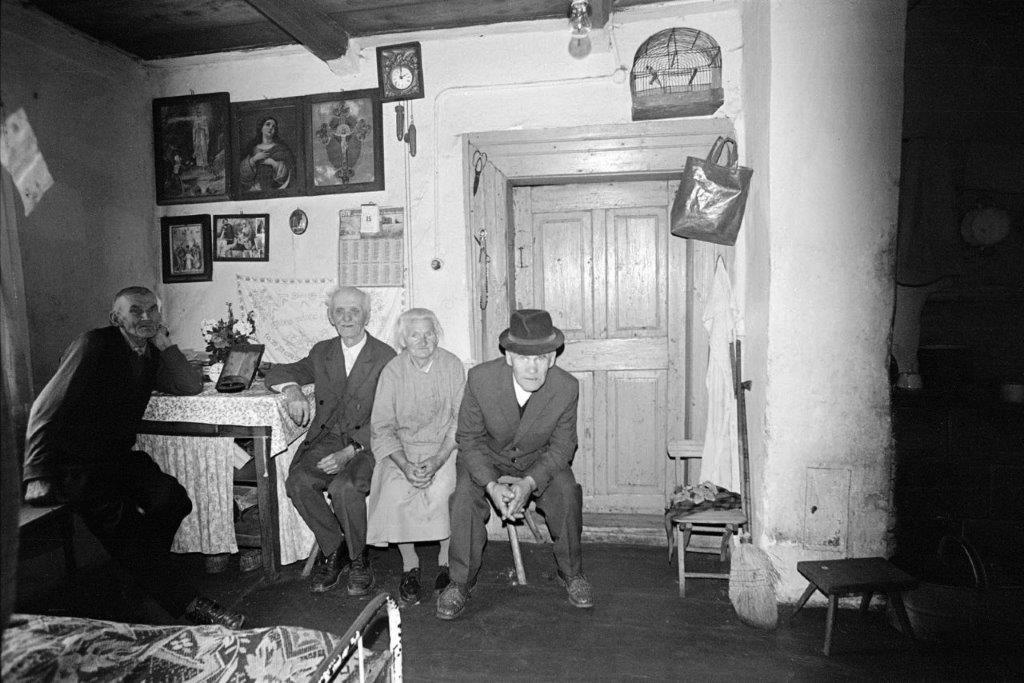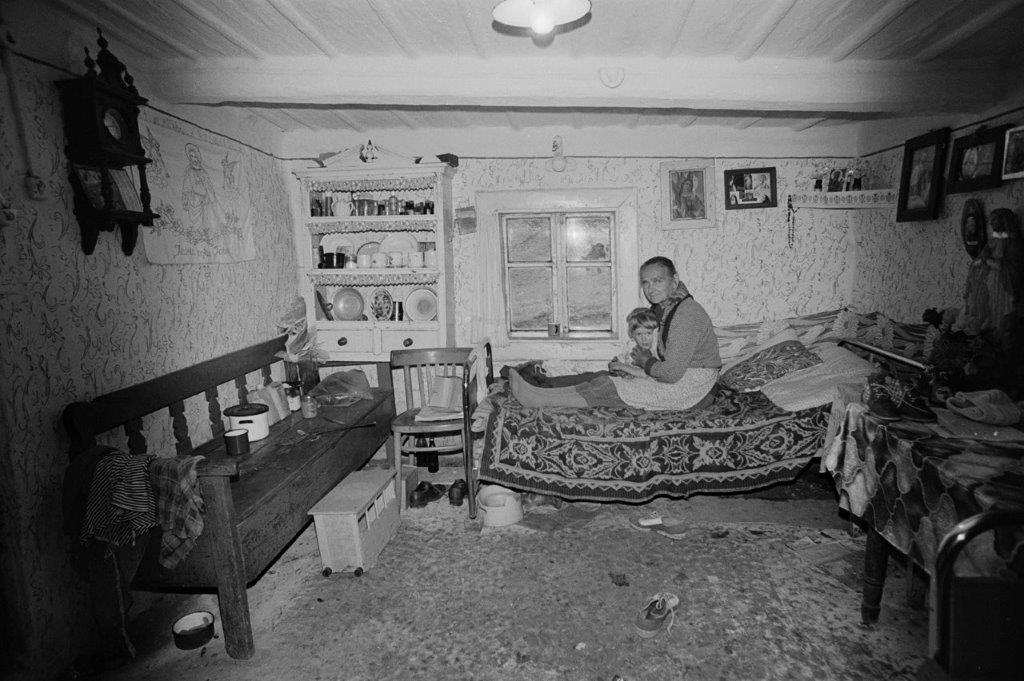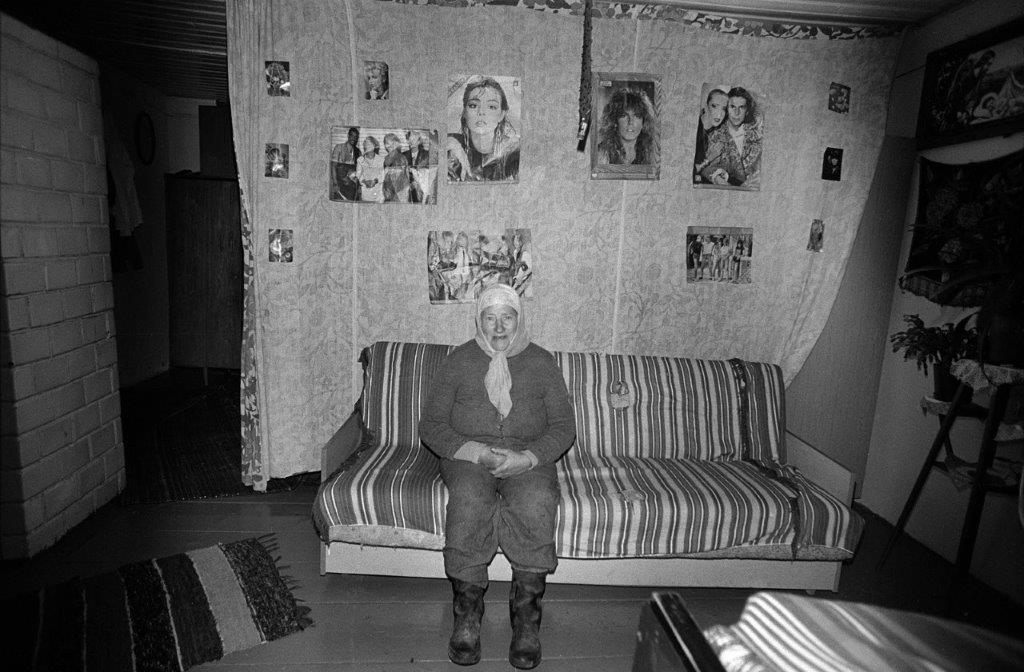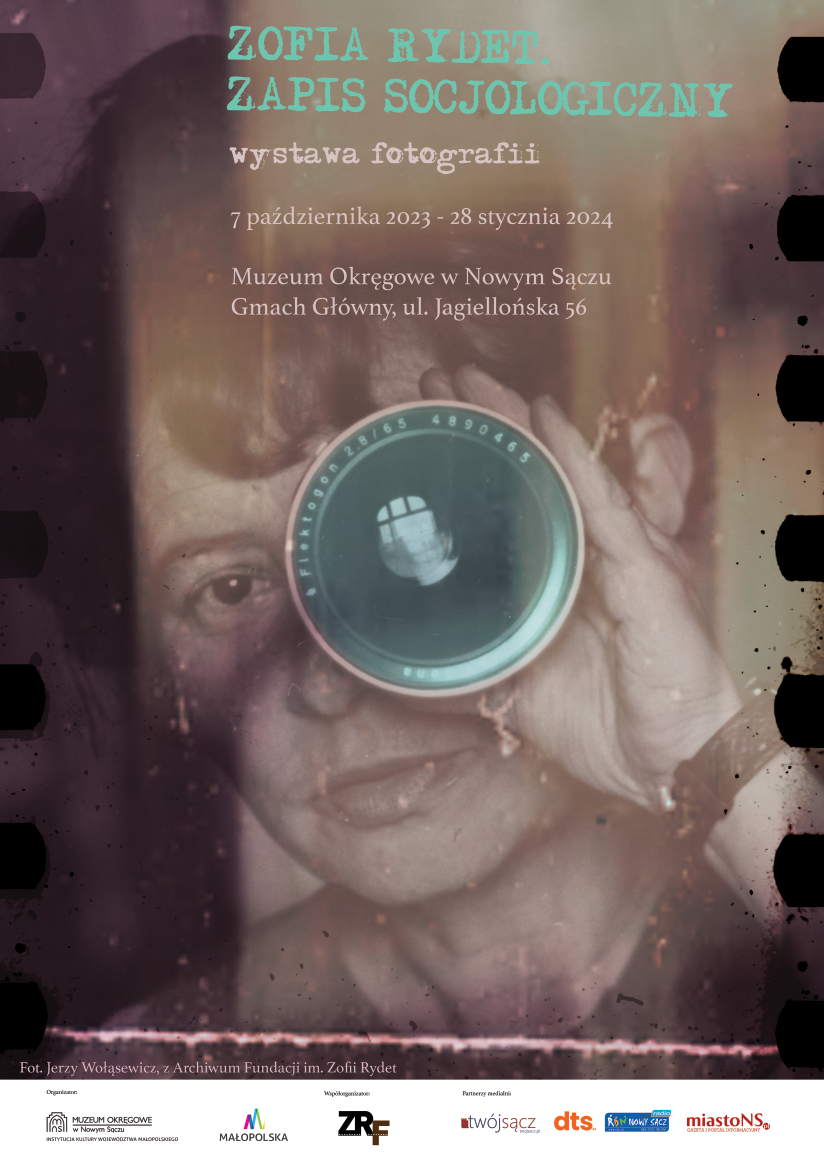Exhibition
Zofia Rydet. Sociological record
The exhibition of Zofia Rydet's photographs is an extraordinary opportunity to take a closer look up close to the effects of the work of one of the most outstanding and significant figures of Polish photography. Rydet was the author of numerous photographic series, among which "Sociological Record", started in 1978 and continued until her death, gained particular recognition among the audience.

She traveled around Poland, photographing various social groups. Coming in
with her camera in rural cottages and apartments in blocks of flats, she took thousands of photos of individual people and families, creating an image of the private, everyday life of Poles. The artist's idea was to show a man in his most authentic surroundings, among the objects he surrounded himself with, which told his story. She took photos according to one pattern - she sat the subjects against the background of the "prettiest" wall filled with objects, asking them to look straight into the camera without "any smiles". The photographs showed the material status, aesthetic preferences and interests of the reportage's heroes, and often gave an idea of their views and religiosity. On the one hand, these photos are an intimate and honest portrait of Poles, on the other - documentation of social changes taking place in post-war Poland.
with her camera in rural cottages and apartments in blocks of flats, she took thousands of photos of individual people and families, creating an image of the private, everyday life of Poles. The artist's idea was to show a man in his most authentic surroundings, among the objects he surrounded himself with, which told his story. She took photos according to one pattern - she sat the subjects against the background of the "prettiest" wall filled with objects, asking them to look straight into the camera without "any smiles". The photographs showed the material status, aesthetic preferences and interests of the reportage's heroes, and often gave an idea of their views and religiosity. On the one hand, these photos are an intimate and honest portrait of Poles, on the other - documentation of social changes taking place in post-war Poland.
The exhibition presented in the Main Building of the District Museum in Nowy Sącz includes approximately 100 photographs from Zofia Rydet's most famous photographic document, "The Sociological Record". The exhibition will be accompanied by a catalog containing photos of Nowy Sącz and the surrounding area, taken mainly in the 1960s, which are part of a larger collection titled Documentations (1950-1978). The exhibition will include a film entitled: “Infinity of long roads. "Overheard and observed Zofia Rydet.", directed by Andrzej Różycki in 1989. The document is a very personal and engaging self-commentary of the Artist on her creative work.
We highly recommend it!
The exhibition was organized thanks to the courtesy of the Foundation. Zofia Rydet as part of the project "Home museums, Revitalizing identity in local communities of Małopolska".
We highly recommend it!
The exhibition was organized thanks to the courtesy of the Foundation. Zofia Rydet as part of the project "Home museums, Revitalizing identity in local communities of Małopolska".
Zofia Rydet
She was born on May 5, 1911 in Stanisławów in the Eastern Borderlands, the daughter of Józefa and Ferdynand Rydet. In 1933, she graduated from the Main School of Economics in Snopków near Lviv, then worked in the Orbis office in Stanisławów. There it found war and subsequent occupations: Soviet, Hungarian and German. After the war and a short stay in Rabka (with which she was strongly associated until the end of her life), she settled in Bytom and ran a stationery and toy shop there. At the age of 40, her youthful fascination with photography was revived. In 1954, encouraged by her success in local photography competitions, she joined the Gliwice Photographic Society, where she developed skills and important friendships with other photographers.
In 1961, as a member of ZPAF, she moved from Bytom to Gliwice, where from 1963 she taught photography at the Gliwice University of Technology. At the same time, she sent her photos to international photography reviews in Poland and around the world, winning medals, distinctions and international AFIAP and EFIAP titles. She traveled a lot, in the 1960s she visited, among others, Yugoslavia, Italy, Egypt, Greece, Lebanon, Albania, Spain, Hungary. She took reportage photos of children for her first important photographic series - Little Man, shown at many individual exhibitions, and in 1964 published in the form of an album. Her subsequent photographic ventures were also devoted to man: Time of Passing - related to old age, and The World of Feelings and Imagination - a series of surreal photomontages and collages created since the late 1960s (published in the form of a book
in 1979), also presented in the form of slide shows (diaporamas)
with a poetic and musical background. A consequence of the fascination with man
and the purpose of numerous trips around Poland was the monumental Sociological Record, created since 1978. At the end of the 1970s, Zofia Rydet presented the conceptual series Infinity of Long Roads. The last important series was Silesian Suite, produced at the turn of the 1980s and 1990s, containing self-quotes
from earlier photos. These are collages and photomontages that the artist composed in the shape of folk religious performances, complementing the photographs with wild flowers, fragments of fabrics and newspaper clippings. Zofia Rydet died on August 24, 1997 in Gliwice, she rests in the old cemetery in Rabka.
Zofia Rydet's works can be found in the most important Polish collections, including: the National Museum in Wrocław, the Museum of Art in Łódź, the Silesian Museum in Katowice, the Museum of Photography in Krakow, the Museum of Modern Art in Warsaw, as well as foreign ones: including: at the Museum of Modern Art in New York, the Center Georges Pompidou in Paris, the Museum of Modern Art in Kyoto and the National Museum of Photography, Film and Television in Bradford.
In 1961, as a member of ZPAF, she moved from Bytom to Gliwice, where from 1963 she taught photography at the Gliwice University of Technology. At the same time, she sent her photos to international photography reviews in Poland and around the world, winning medals, distinctions and international AFIAP and EFIAP titles. She traveled a lot, in the 1960s she visited, among others, Yugoslavia, Italy, Egypt, Greece, Lebanon, Albania, Spain, Hungary. She took reportage photos of children for her first important photographic series - Little Man, shown at many individual exhibitions, and in 1964 published in the form of an album. Her subsequent photographic ventures were also devoted to man: Time of Passing - related to old age, and The World of Feelings and Imagination - a series of surreal photomontages and collages created since the late 1960s (published in the form of a book
in 1979), also presented in the form of slide shows (diaporamas)
with a poetic and musical background. A consequence of the fascination with man
and the purpose of numerous trips around Poland was the monumental Sociological Record, created since 1978. At the end of the 1970s, Zofia Rydet presented the conceptual series Infinity of Long Roads. The last important series was Silesian Suite, produced at the turn of the 1980s and 1990s, containing self-quotes
from earlier photos. These are collages and photomontages that the artist composed in the shape of folk religious performances, complementing the photographs with wild flowers, fragments of fabrics and newspaper clippings. Zofia Rydet died on August 24, 1997 in Gliwice, she rests in the old cemetery in Rabka.
Zofia Rydet's works can be found in the most important Polish collections, including: the National Museum in Wrocław, the Museum of Art in Łódź, the Silesian Museum in Katowice, the Museum of Photography in Krakow, the Museum of Modern Art in Warsaw, as well as foreign ones: including: at the Museum of Modern Art in New York, the Center Georges Pompidou in Paris, the Museum of Modern Art in Kyoto and the National Museum of Photography, Film and Television in Bradford.

